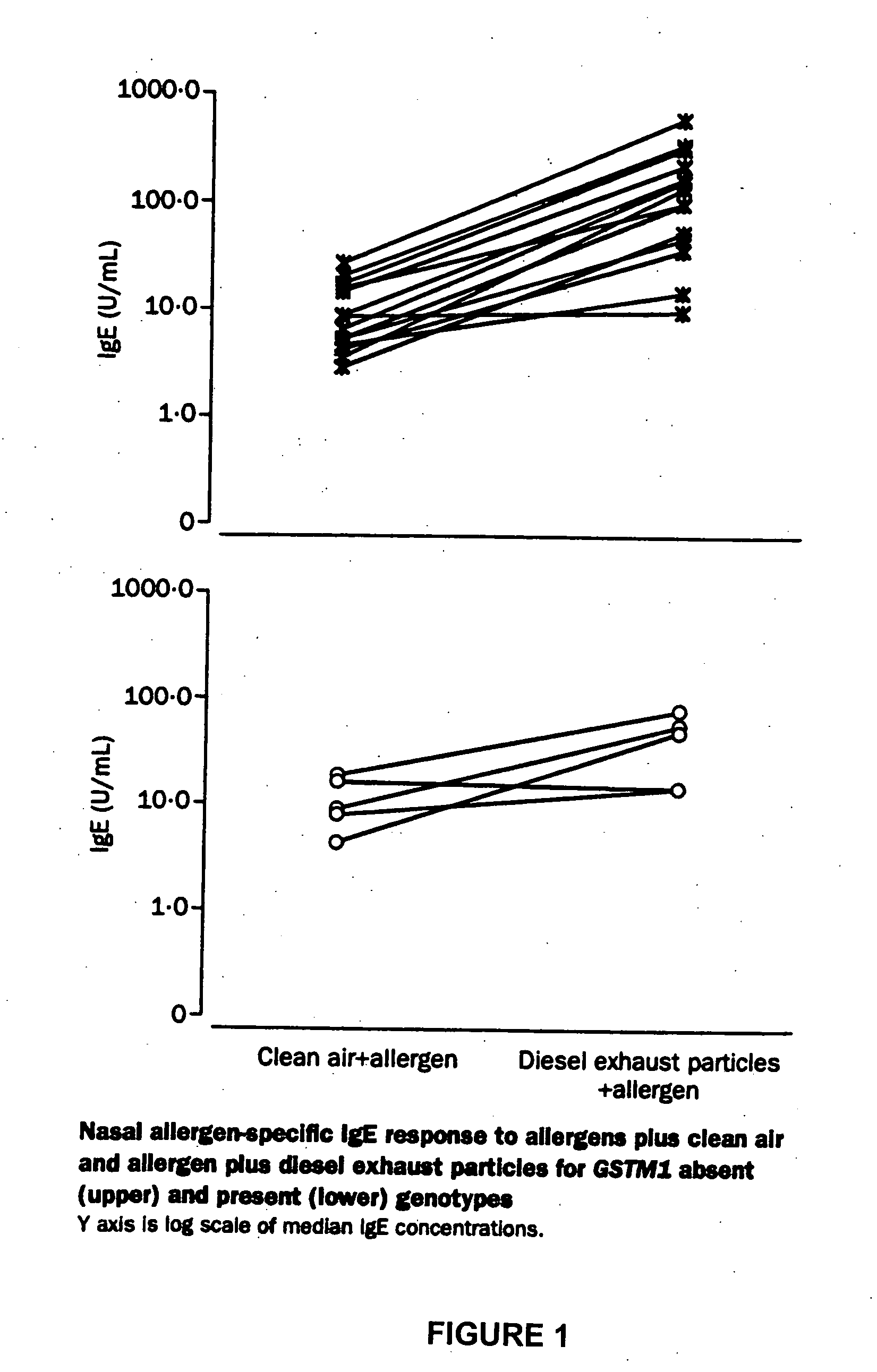Method for determining susceptibility of an individual to allergen induced hypersensitivity
a technology of allergens and susceptibility, applied in the direction of microorganism testing/measurement, biochemistry apparatus and processes, etc., can solve the problems of airway constriction and anaphylactic shock, environmental tobacco smoke exposure, and increased risk of a wide range of adverse health effects
- Summary
- Abstract
- Description
- Claims
- Application Information
AI Technical Summary
Benefits of technology
Problems solved by technology
Method used
Image
Examples
example 1
Diesel Exhaust Particles
[0194] Participants
[0195] We recruited 19 non-smoking volunteers (seven males and 12 females) in Los Angeles, Calif., USA. All had a positive epicutaneous skin test (>4 mm wheal with surrounding erythema) to short ragweed (an allergen not present in the Los Angeles region) and an allergy history consistent with allergic rhinitis. Based on interview responses, none of the volunteers had any atypical exposure to pollutants and no air pollution alerts in the Los Angeles area were reported during the study periods. None of the participants reported a respiratory infection in the previous 4 weeks and none had used topical or systemic steroids in the 3 months before the study or oral antihistamines for the previous week. None had ever received allergy immunotherapy. All participants were asked to fill out symptom score cards 2 days before and throughout the study period. All studies were approved by the human subject protection committee of the University of Cali...
example 2
Environmental Tobacco Smoke
[0215] Subjects
[0216] A total of 19, non-smoking volunteers (7 males and 12 females) age 20 to 34 years old were recruited in Los Angeles, Calif. (Table 6). All had been shown to have an allergy history consistent with allergic rhinitis and a positive intradermal skin test to short ragweed. While all subjects showed positive skin tests for other allergens, all were asymptomatic and none complained of symptoms during the course of the study. In addition, all subjects who were challenged intranasally with the ragweed allergen Amb a I displayed immediate allergic symptoms such as sneezing, runny nose, and ocular itching. The subjects did not take any medication for the 3 days prior to or during the duration of the study. None of the volunteers cohabited with smokers or had any known extensive or extraordinary exposure to pollutants. Short ragweed was used as the antigen in the nasal challenges since it is not present in the Los Angeles area and the cross-re...
PUM
| Property | Measurement | Unit |
|---|---|---|
| Fraction | aaaaa | aaaaa |
| Volume | aaaaa | aaaaa |
| Volume | aaaaa | aaaaa |
Abstract
Description
Claims
Application Information
 Login to View More
Login to View More - R&D
- Intellectual Property
- Life Sciences
- Materials
- Tech Scout
- Unparalleled Data Quality
- Higher Quality Content
- 60% Fewer Hallucinations
Browse by: Latest US Patents, China's latest patents, Technical Efficacy Thesaurus, Application Domain, Technology Topic, Popular Technical Reports.
© 2025 PatSnap. All rights reserved.Legal|Privacy policy|Modern Slavery Act Transparency Statement|Sitemap|About US| Contact US: help@patsnap.com



